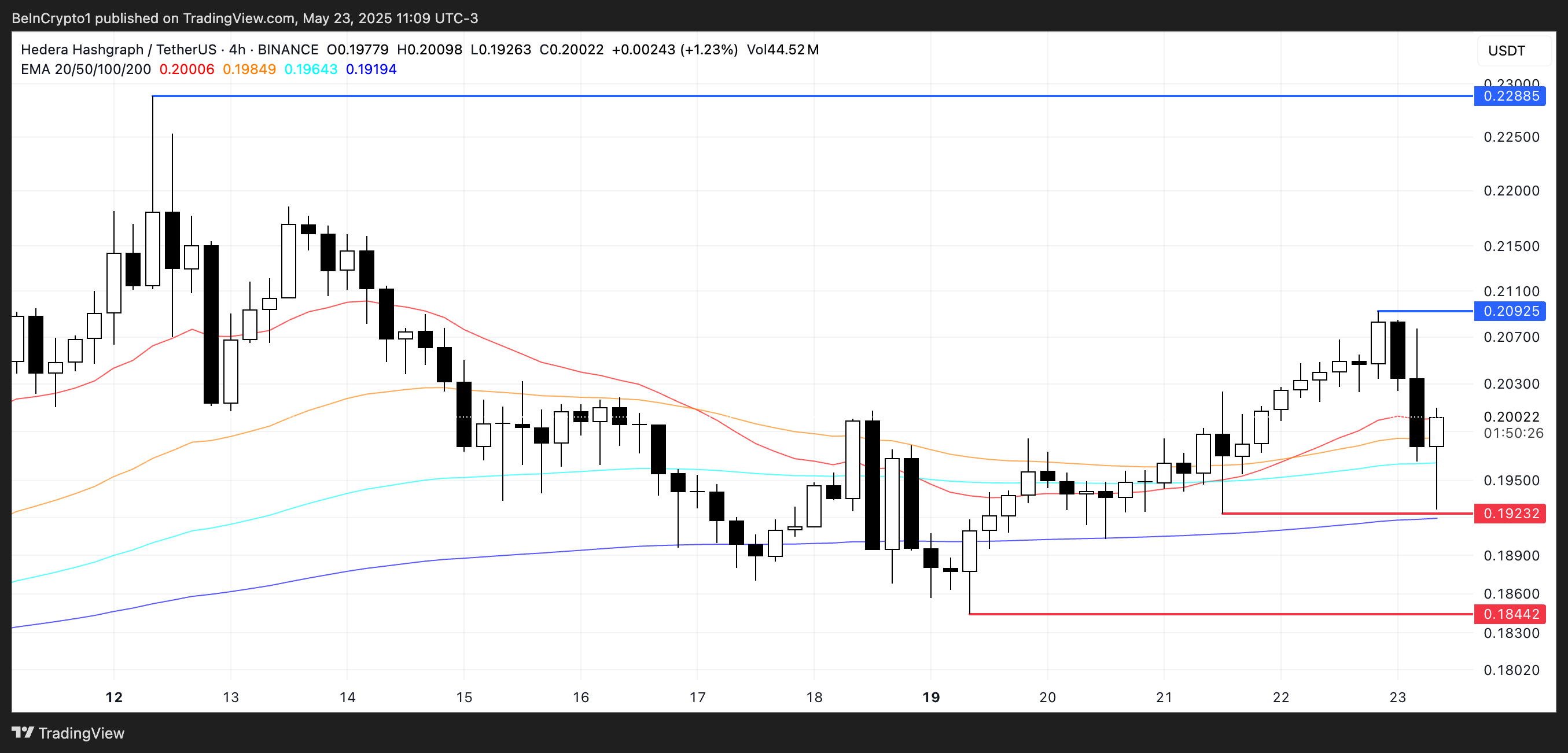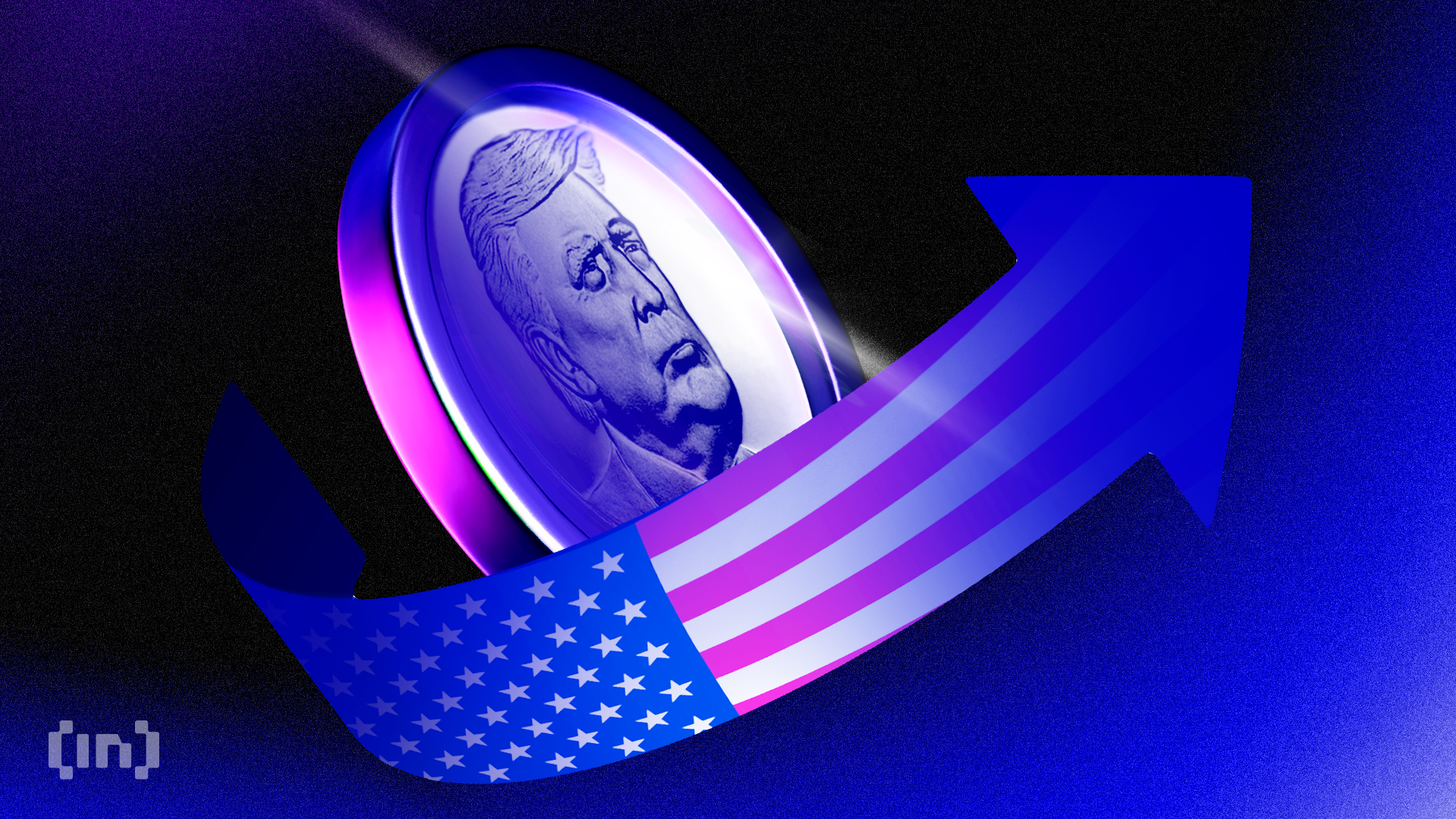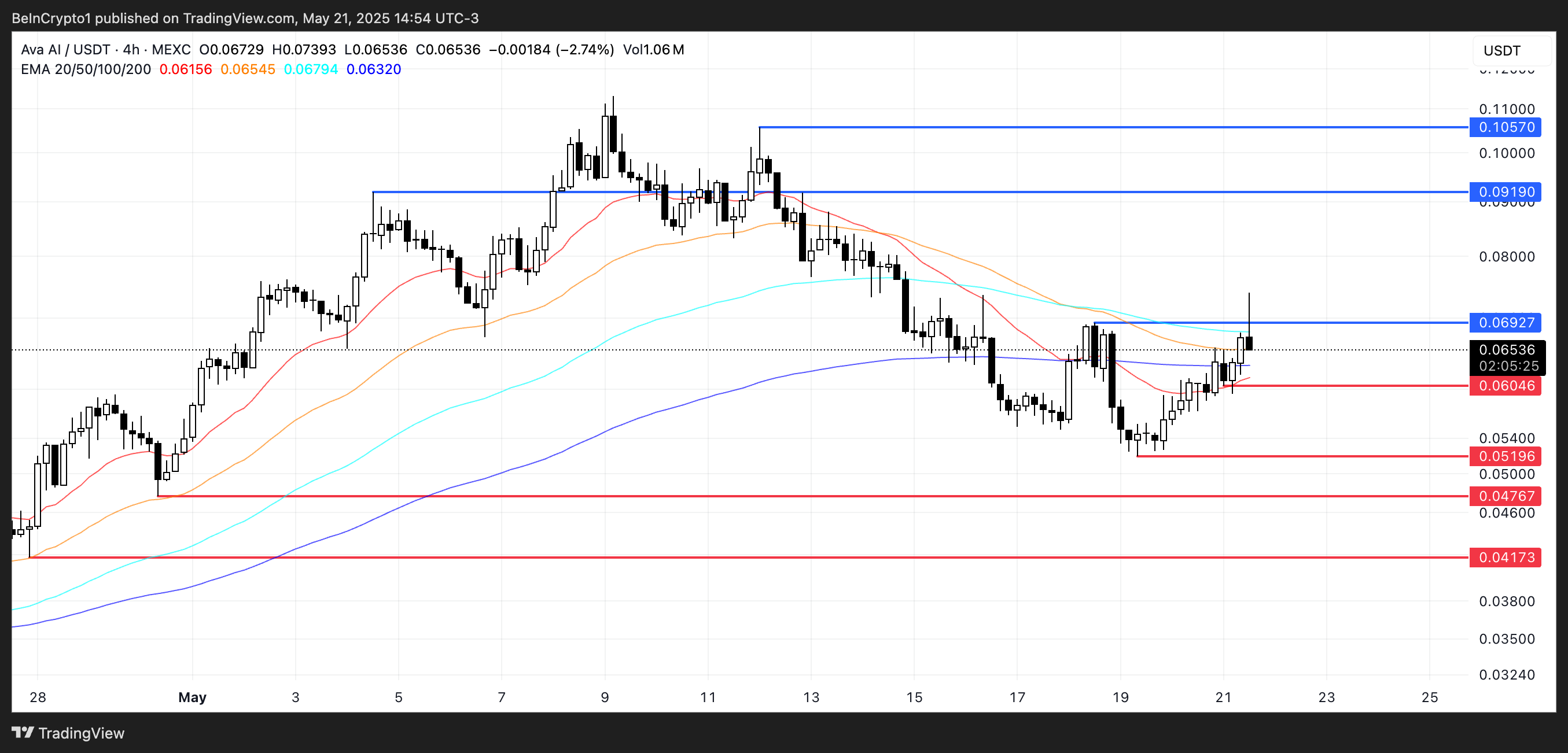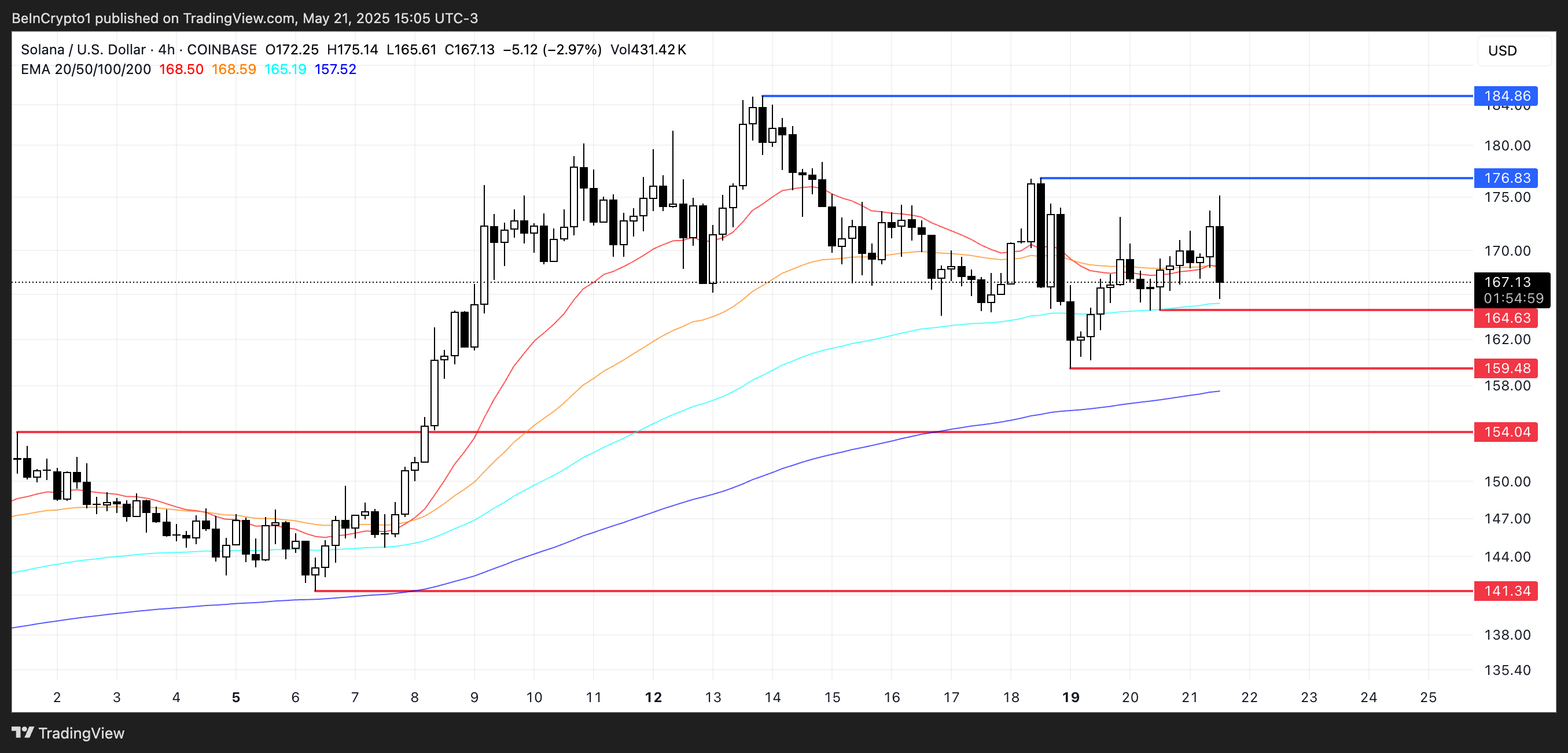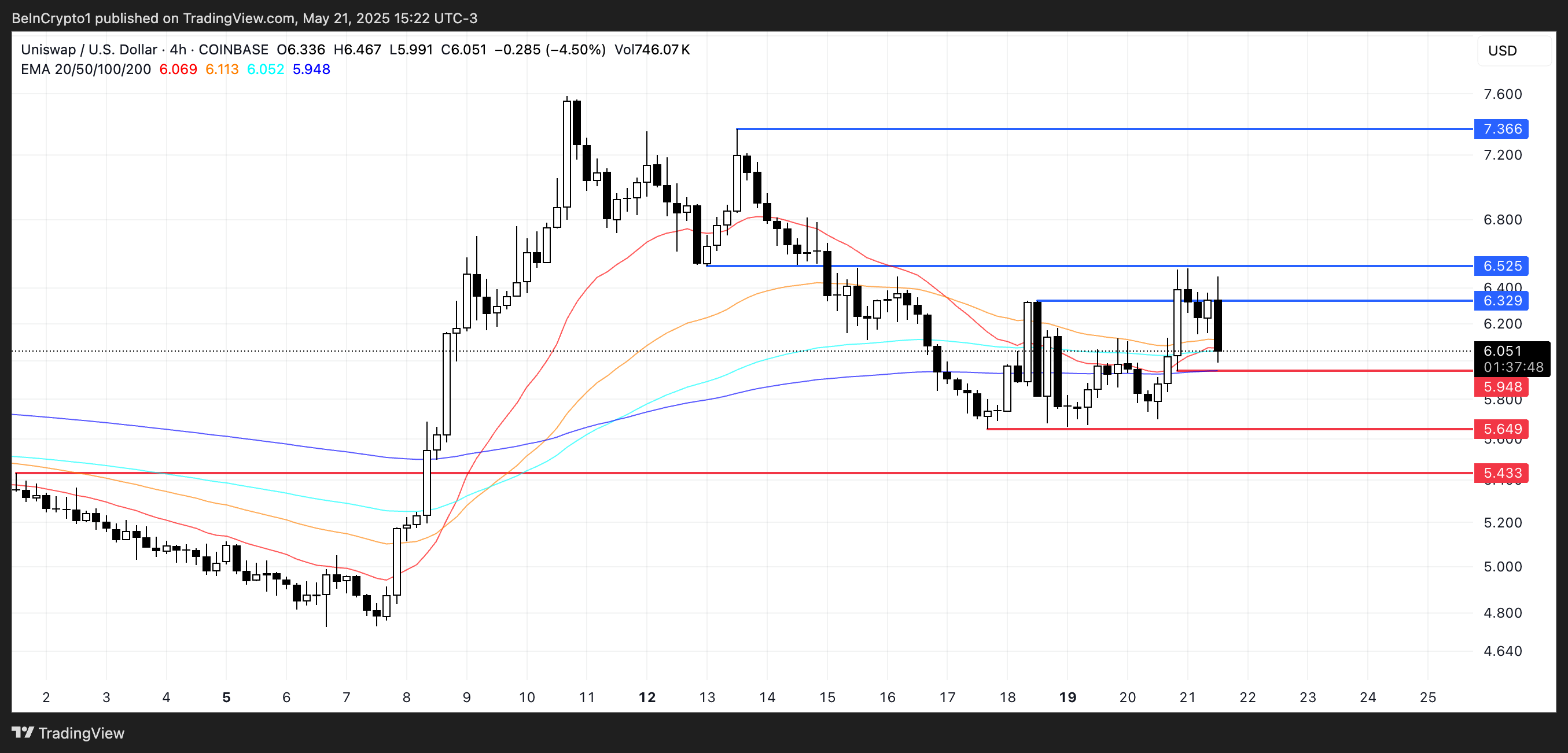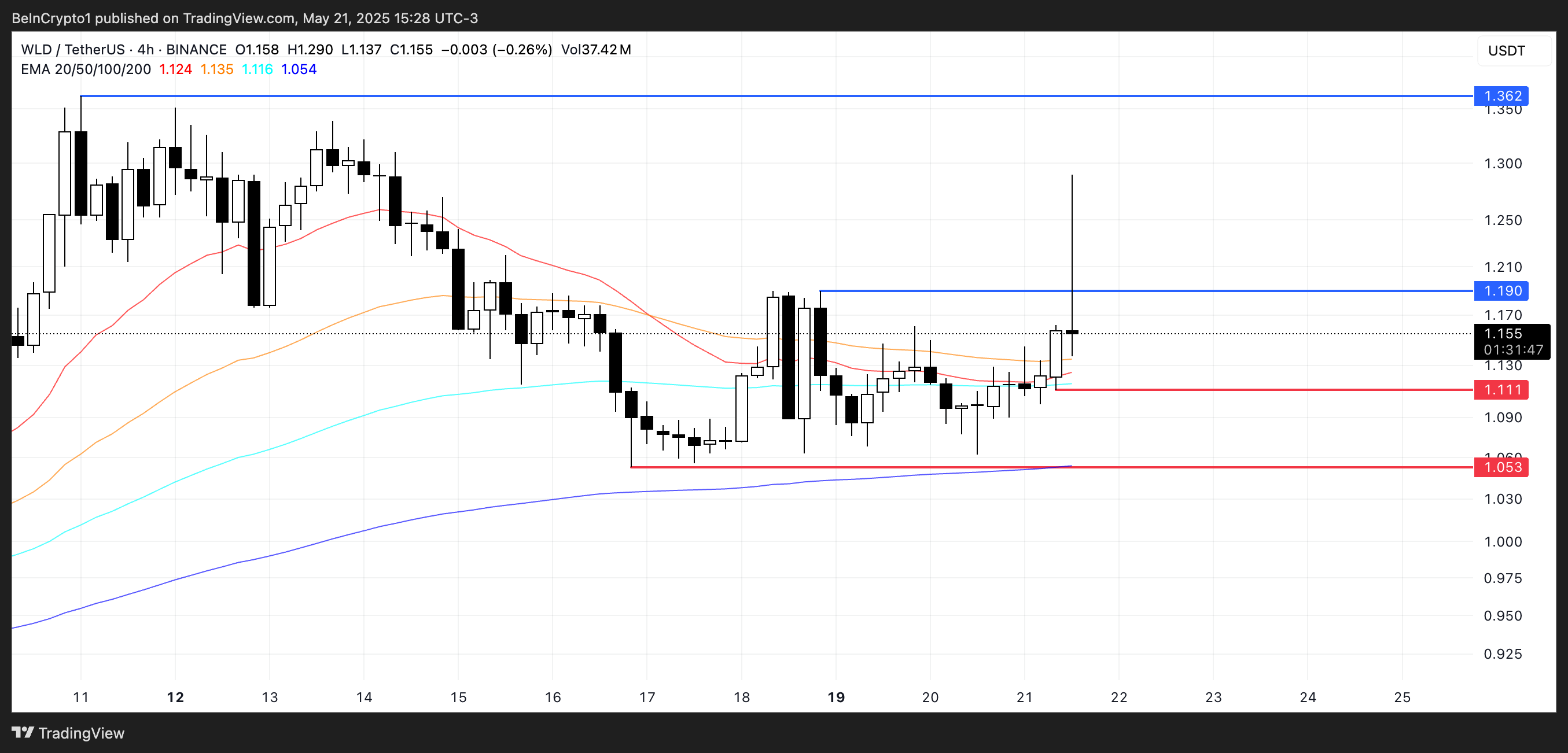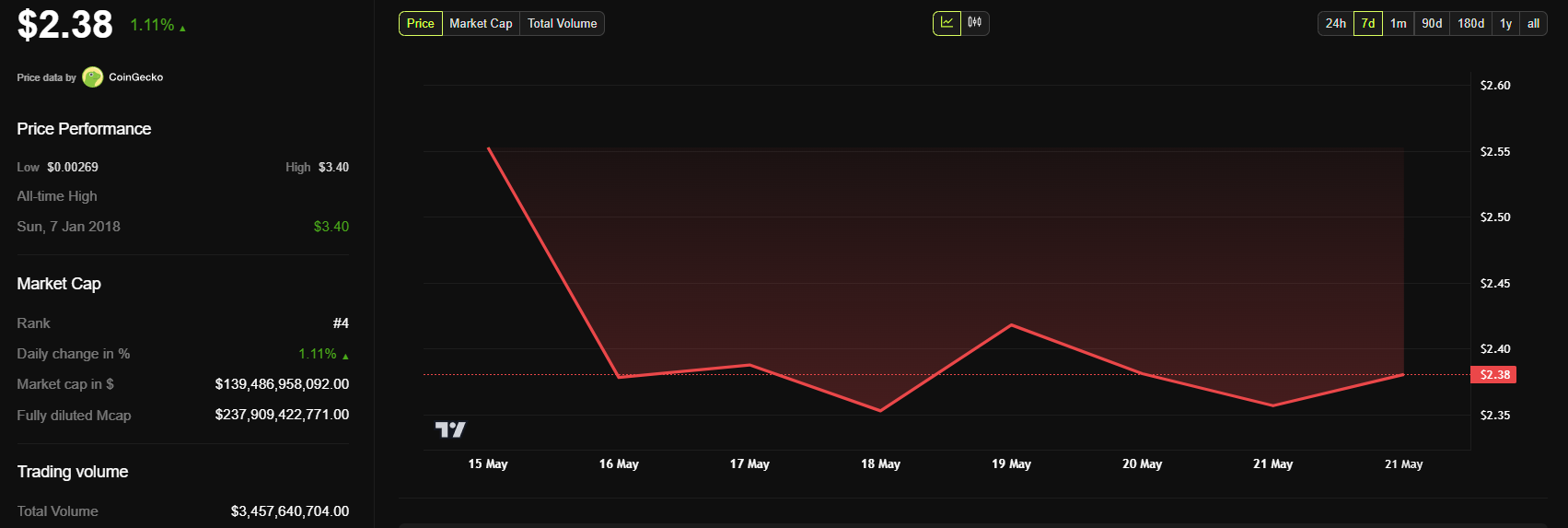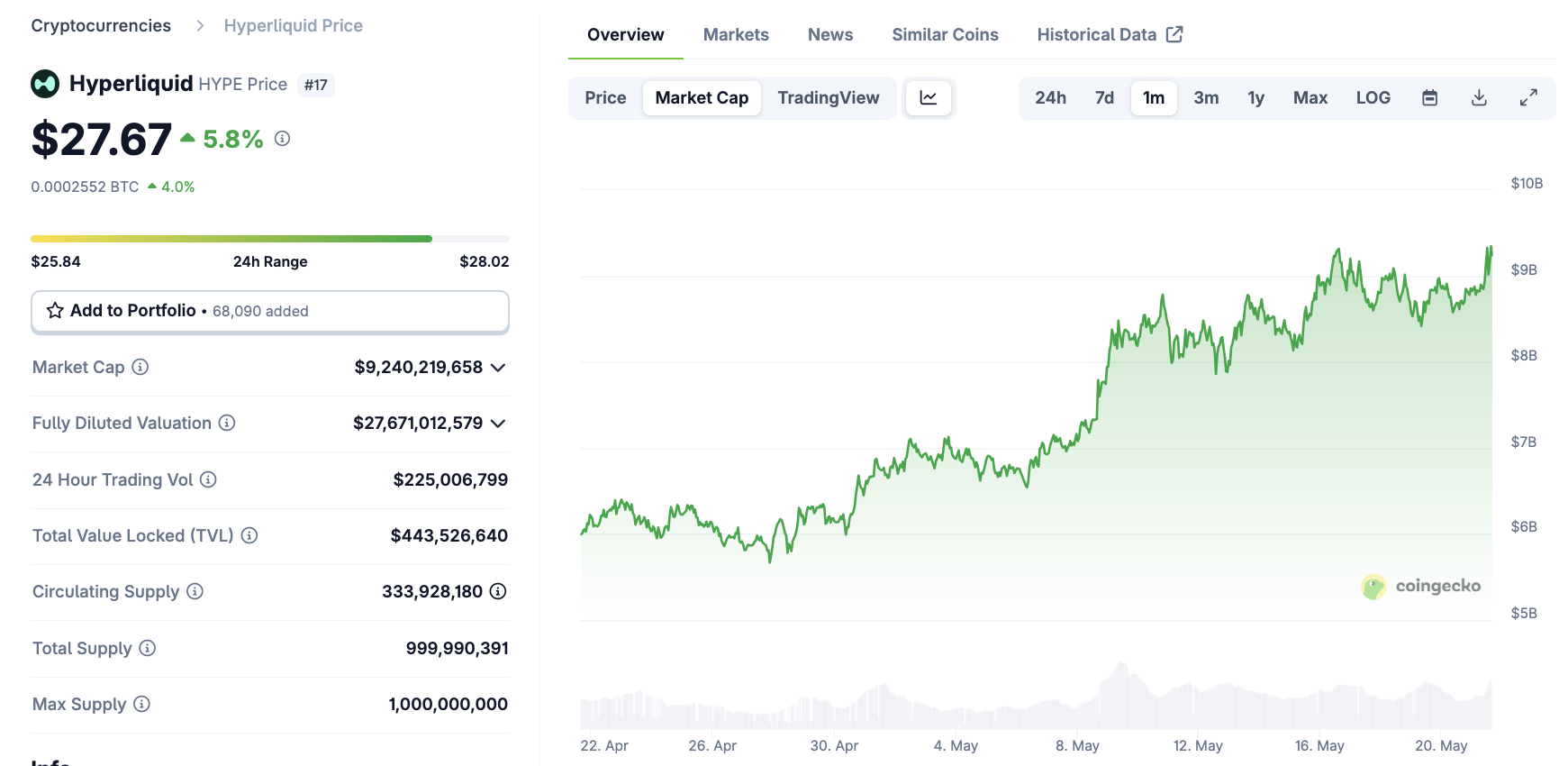XRP Struggles to Hold Support as Death Cross Nears
XRP has been down 2.6% in the last 24 hours, reflecting growing technical weakness across multiple indicators. Its price is below $2.40. Its RSI has sharply dropped into neutral territory, signaling fading momentum after nearly reaching overbought levels just one day prior.
The Ichimoku Cloud setup has turned bearish, with the price now trading below key support lines and under a red cloud, indicating increasing downward pressure. Adding to the concern, XRP’s EMAs are on the verge of forming a death cross, a bearish signal that could lead to deeper declines unless a strong recovery emerges.
XRP Loses Strength After RSI Falls Sharply From Near-Overbought Levels
XRP’s Relative Strength Index (RSI) has dropped to 46.72, falling from 64.86 just a day earlier, indicating a swift loss of upward momentum.
The RSI is a widely used momentum oscillator that ranges from 0 to 100. It helps traders identify overbought and oversold conditions.
Readings above 70 typically suggest an asset may be overbought and due for a correction, while values below 30 indicate oversold conditions that could lead to a bounce. Levels between 30 and 70 are considered neutral and reflect a lack of strong directional trend.

With XRP now sitting at 46.72, the token has returned to a neutral zone, signaling indecision and a potential pause in its previous upward move.
The sharp decline suggests weakening buyer interest, which could lead to further price consolidation or mild downside if market sentiment doesn’t improve.
For bullish momentum to resume, XRP would likely need a bounce in RSI toward the 60–70 range, supported by a broader recovery in crypto markets. Until then, price action may remain range-bound or slightly bearish.
Ichimoku Cloud Turns Bearish for XRP as Price Drops Below Key Lines
The Ichimoku Cloud chart for XRP shows a bearish shift in momentum. The price has broken below both the Tenkan-sen (blue line) and the Kijun-sen (red line), signaling a short-term trend reversal.
The price action is now positioned beneath the Kumo (cloud), which has transitioned from green to red—an indication that market sentiment is weakening and downward pressure is building.
The red cloud ahead suggests that bearish momentum could continue unless there’s a strong recovery to push the price back above the cloud.
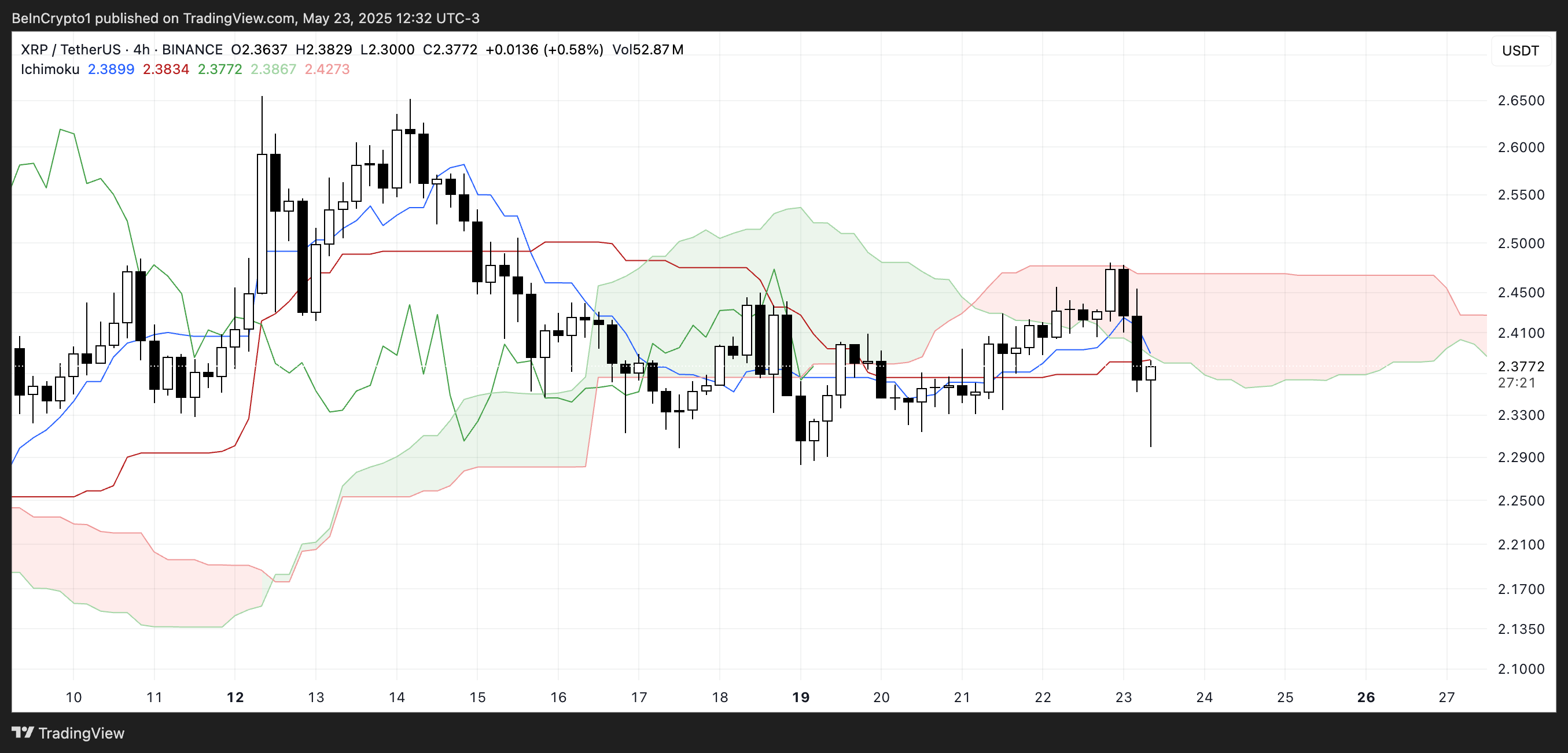
Additionally, the Senkou Span A (leading green line) is trending downward, and the Senkou Span B (leading red line) is flat, showing a loss of bullish momentum and potential for range-bound or declining movement.
Although not clearly shown, the Chikou Span (lagging green line) appears to be below the price action, further confirming a bearish outlook.
Overall, the Ichimoku setup reflects increasing resistance and declining support, suggesting XRP is in a vulnerable technical position unless buyers step back in forcefully.
XRP Faces Bearish Risk as EMA Death Cross Looms
XRP recently approached the $2.50 zone but faced sharp rejection as Bitcoin’s sudden drop triggered a broader market pullback.
The selling pressure has weighed heavily on XRP’s structure, and its exponential moving averages (EMAs) are now converging in a way that suggests a potential death cross. This bearish crossover typically signals extended downside risk.
If confirmed, this pattern could open the door to a deeper correction, with key support levels at $2.32 and $2.28 in focus. A break below those zones could accelerate losses toward $2.12 and $2.07 if bearish momentum intensifies.
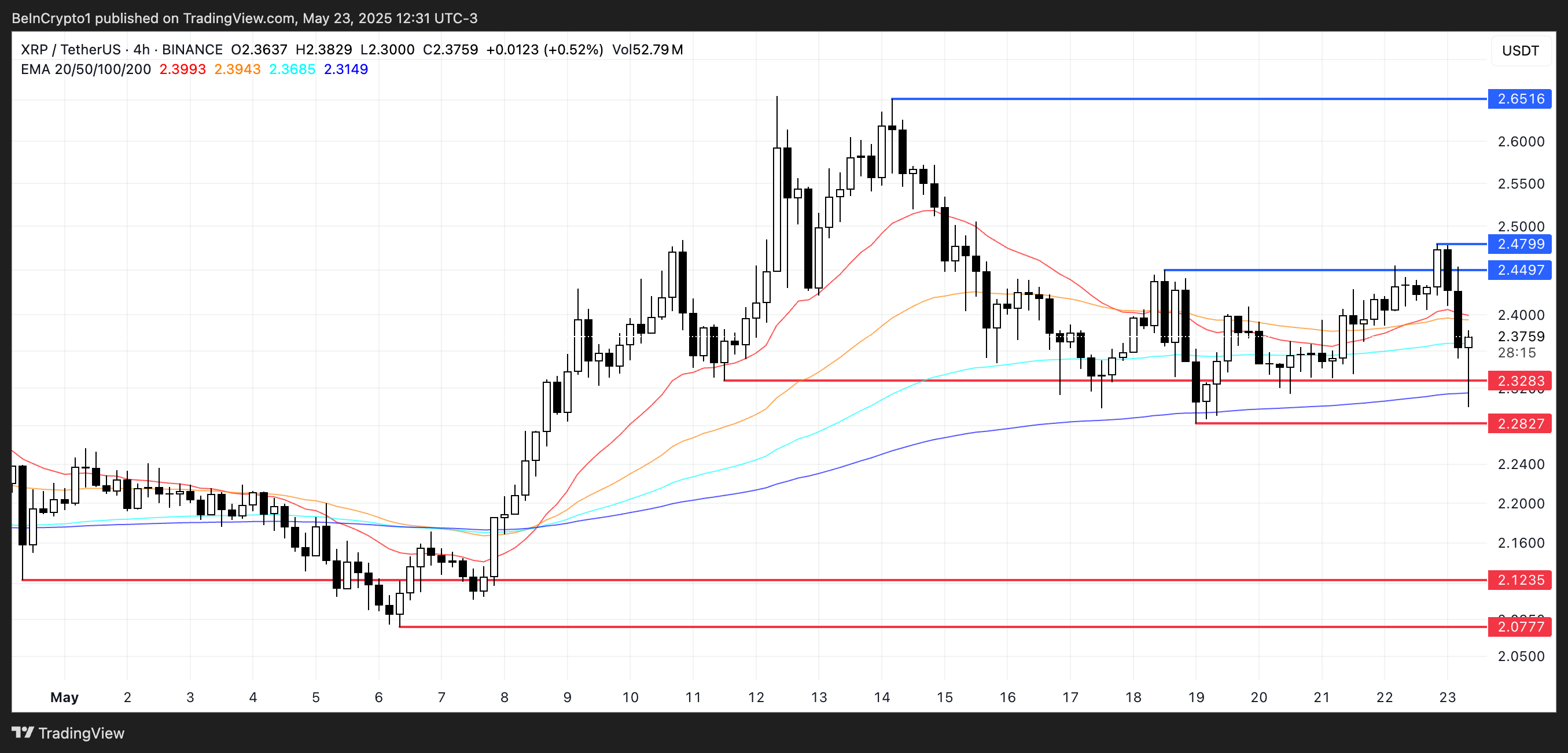
However, the outlook could shift quickly if XRP manages to stabilize and regain upward momentum.
A push back toward the $2.449 resistance would be the first key test for bulls, and reclaiming $2.479 could open the way for a retest of the $2.65 level.
Such a move would likely require a broader recovery in crypto sentiment, particularly from Bitcoin, as well as a clear rejection of the looming death cross. Until then, the technical bias remains tilted to the downside.
The post XRP Struggles to Hold Support as Death Cross Nears appeared first on BeInCrypto.

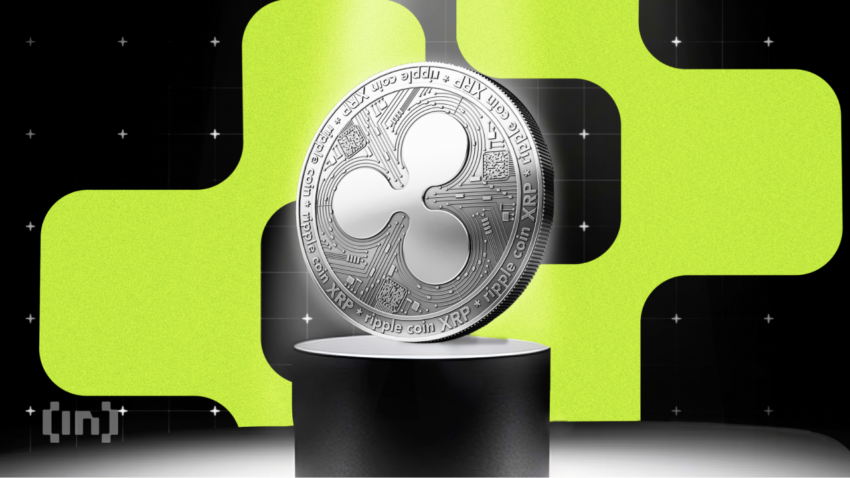
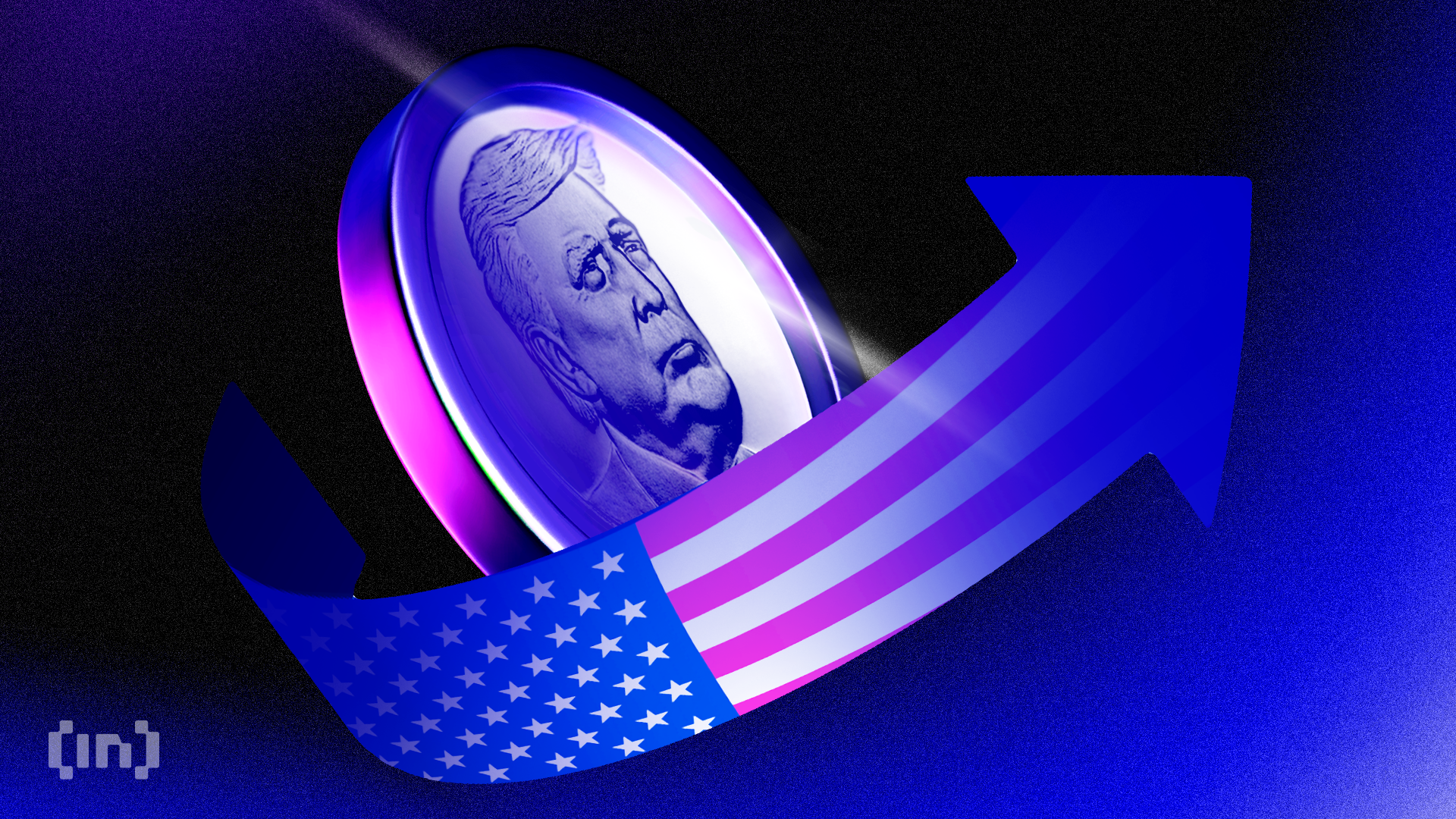
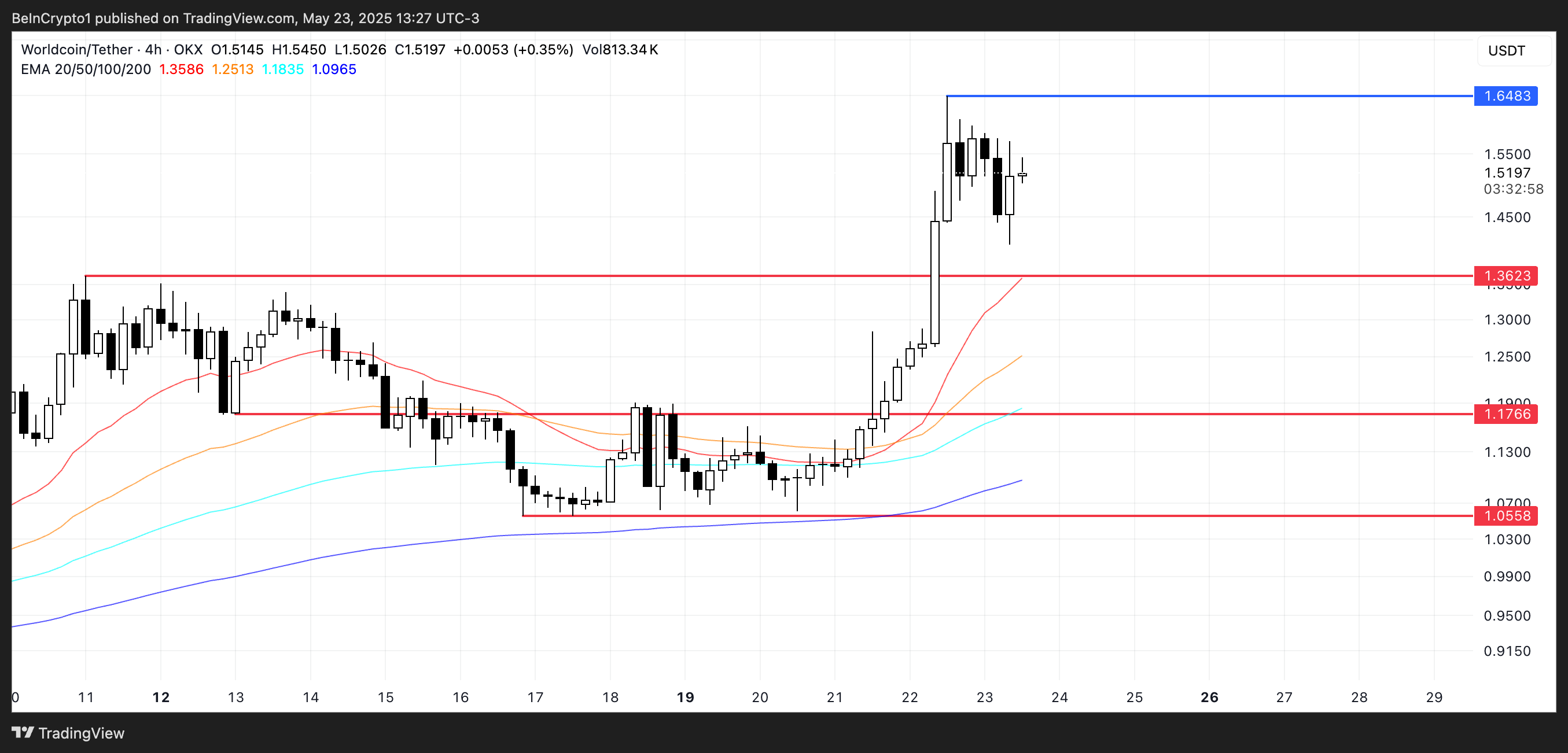
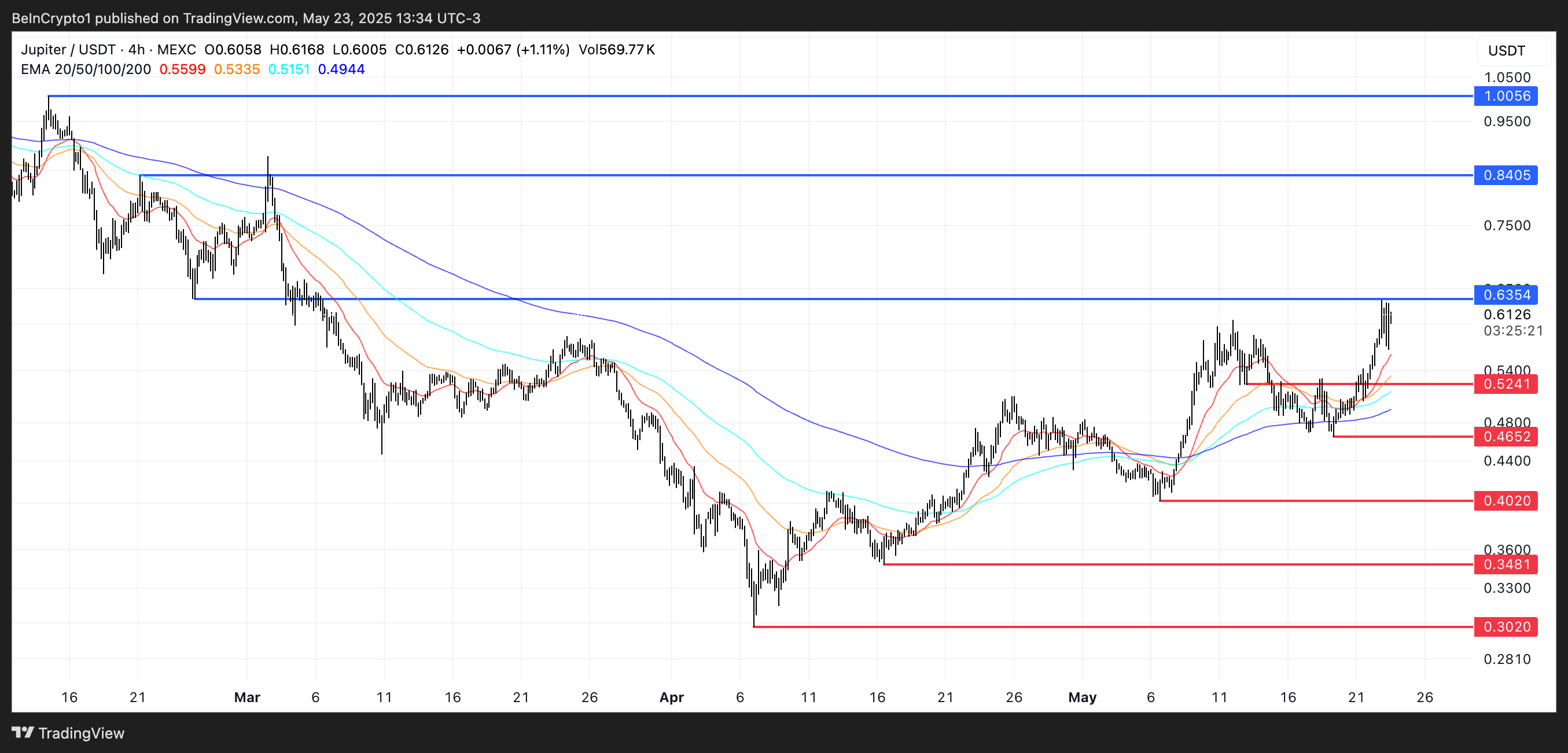

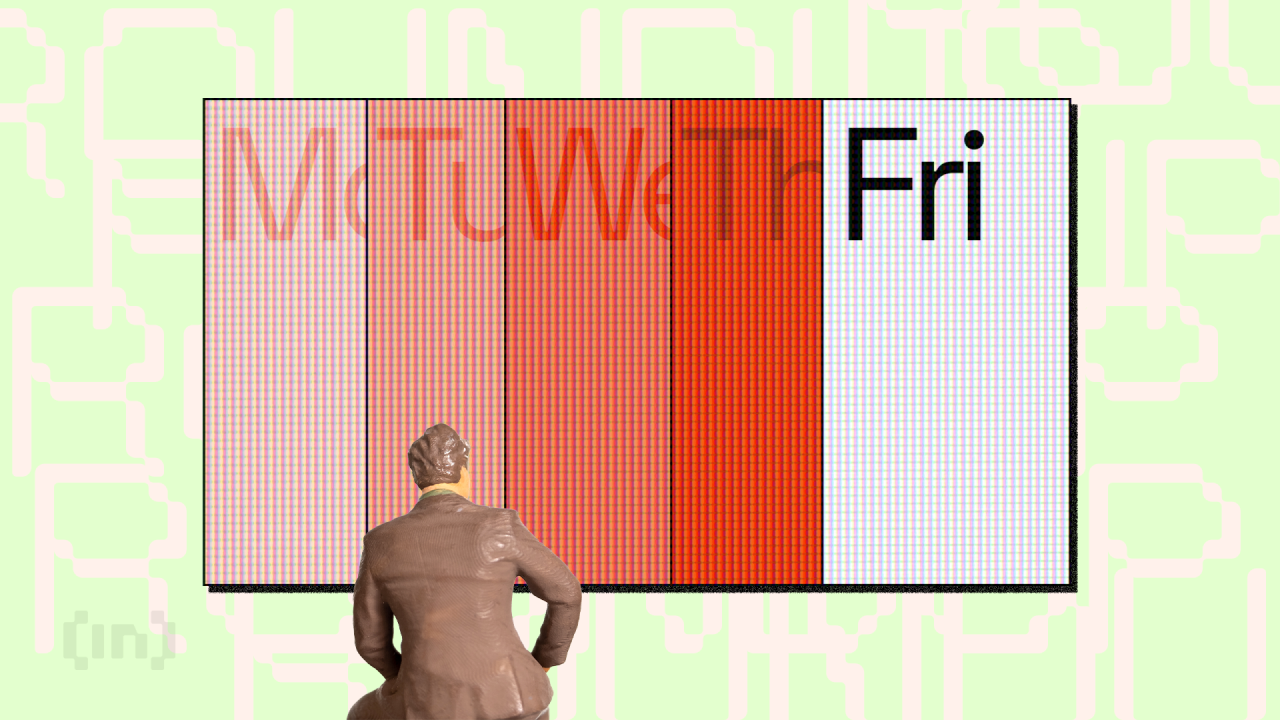


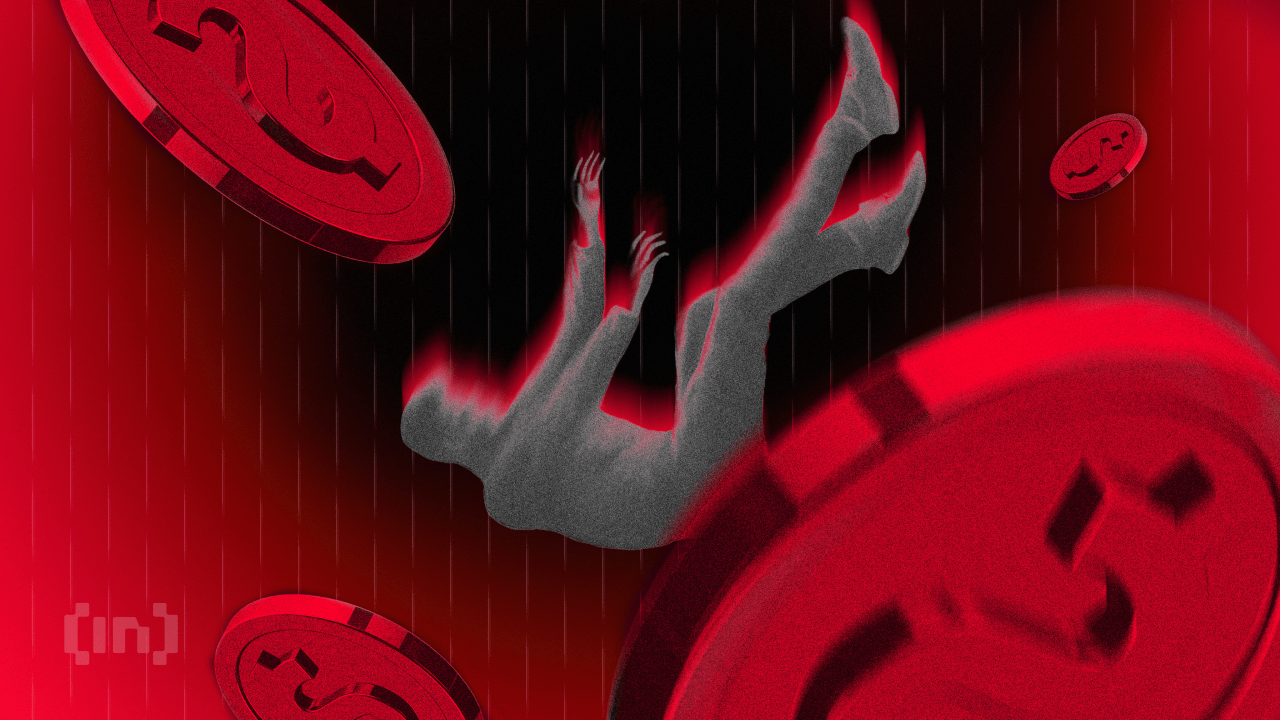

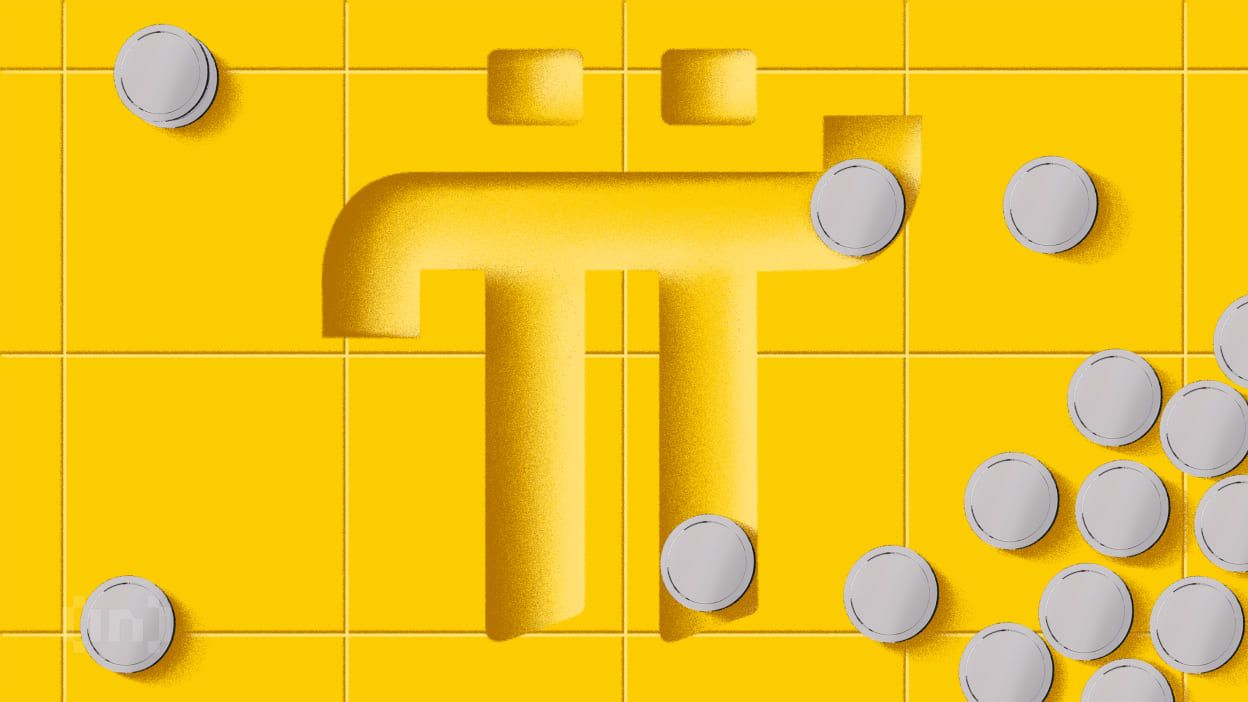

 40+ collateral options
40+ collateral options




